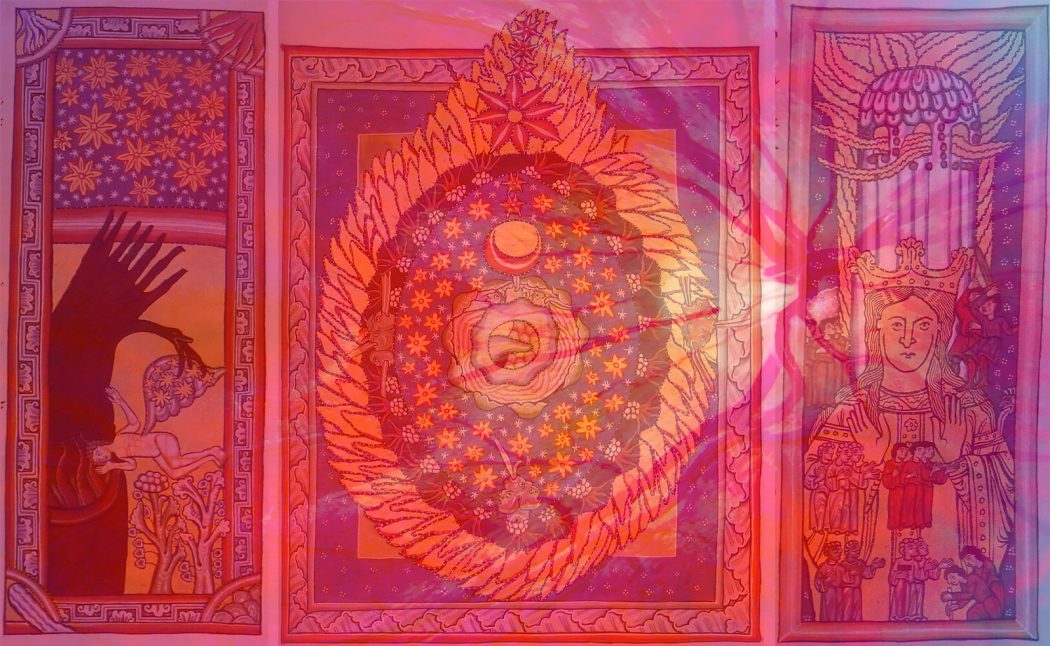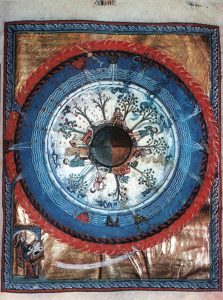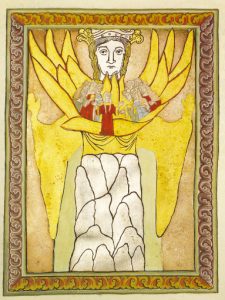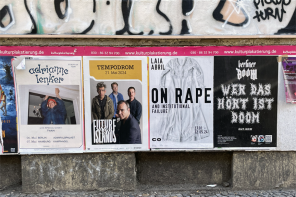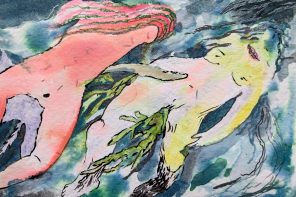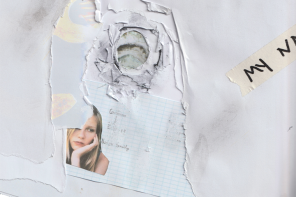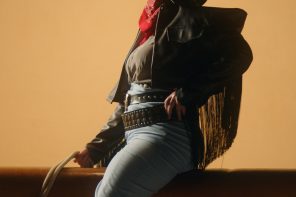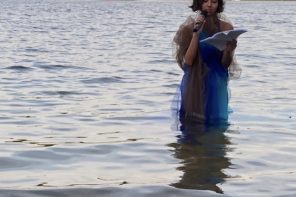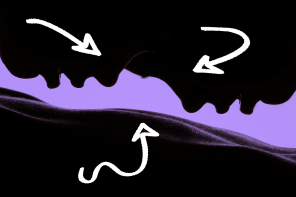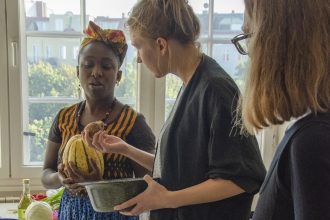Wounds and orifices are ruptures, openings, portals – bodily zones where our porousness is made gapingly clear.
Contents pour in and out of them, entering and exiting for a range of reasons. The relationship between inner and outer is simultaneously sensual and practical. We use our passageways for pleasure, communication, consumption, containment, and release. We take the world in and spit it back out, constantly. The edges of these hollows shift like tectonic plates. Rubbing up against each other, us and the world mutually be/come.
One might reflect on the medieval era as a period embodied by movements both of enclosure and transmission. The transition into capitalism, as articulated by wise folks like Silvia Federici and others, was a process in which intimate knowledge of land was severed through increasingly regulated regimes of land ownership. The acts of enclosure echoed across territorial, agricultural, economic, physical, and social terrains. If land is not commonly held, bodies passing upon that land and engaged in meaningful relation with that land become foreign to their own belonging. The effects of privatization, and its anatomy of borders, were reflected in the treatment of land and of bodies, particularly of those closer to land-based knowledges who cared for disease and injury, birth and death. The process of land enclosure secured and restricted access to land through exclusivity models of ownership, while simultaneously enabling global colonial projects. Enclosings took place on material as well as immaterial levels. Federici, writing In Praise of the Dancing Body reminds us that “fixation in space and time has been one of the most elementary and persistent techniques capitalism has used to take hold of the body… Mobility is a threat when not pursued for work-sake as it circulates knowledges, experiences, struggles.” As restraints were placed onto movement, the bonds between body and land were intentionally interrupted; the gates of the body surveyed and patrolled just as the land.
The medieval era is also a time of abundant mysticism. Elvia Wilk traces lineages of female Christian mystics through the Middle Ages in her essay, The Word Made Fresh: Mystical Encounter and the New Weird Divine. She writes of an overarching quality in their experiences, “…perception is not solely of the eye or the other senses. It is a kind of seeing that is also a feeling and a knowing.”
The body is always more than its bounded form. It is a site of connections and multiplicity. Yet this porosity is one of its most feared qualities, as it allows for communion with both the tangible and invisible aspects of realities. Just look at our inherited associations of ‘mystical:’ obscure, illegible, enchanting yet distant. The unknown tends to generate fear.
However, the origins of the word ‘mystical’ conjure a more bodily and relatable image; the Greek root comes from ‘muein’ – the closing of the lips and eyes. These passageways epitomise the beyond in the banal. The mystical becomes more accessible once recognized in the mundane. The body is earthly just as much as it is otherworldly.
Why do we close our eyes while kissing?
Why do we drool out of our mouths while sleeping?
Many entities may pass through the gateway of the lips: food, liquid, saliva, other body’s members, breath, words, sounds. The eyes are entangled with the how of looking. The histories of gazes, their violences as well as their powers, embody an inward turn to sight and site. The eyes are vastly flexible organs; seeing operates on an intricate spectrum from waking to dreaming.
“If mystical encounter entails a sort of spiritual transmission, the body of the mystic is the medium that registers the message” – Elvia Wilk
This exchange between inner and outer, between bodies and the environment, is much more of an ongoing transformation than a transaction. ‘Exchange’ comes from the same root as the verb ‘to barter,’ as in the exchange of goods and services. The ‘change’ part of exchange comes from the term ‘cambire’ whose root means to make different, evolve, or pass from one state into another. The ‘ex’ in ‘exchange’ points outwards from within (just as ‘eso’ as in ‘esoteric’ points inwards.) The prefix ‘ex’ is also tied up with time, relating to past or previous times. Since the medieval era was also a period of transition into capitalist logics of give and take, perhaps this evolution made rigid a quality of exchange that is actually much more fluid and messy.
The knowledge that emerges through inner and outer exchange is one of deep intimacy; a queerness of being in the world as beyond singular, bounded, identifiable. Enclosures enforced upon this connection and the practical care it can offer may be a similar violence that creates enclosures on a sense of self. Necessary efforts to assert certain modes of being in the world seem nowadays to have fallen into patterns of privatising identities. ‘I’ is a single letter that stands its own ground, but an island is made just as much by the waters surrounding it, as the mass that defines its shape. We are more than ourselves, through and beyond anatomy. A quality of shifting plurality, traversing us, making us an ensemble, pervades our being. The communication through this exchange is what makes humans intimately bound with land. Yet this more-than-ness has been and continues to be treated as a danger by cultural forces of regulation, operating from skeptical, fear-based mindsets.
Today is still coping with the inheritance of a vastly complex history through the legacy of the Medieval era, including the scrutiny of intimacy with the environment and the invisible. This intimate relationship has been villainised and interrogated, forcing open the closed lips of the mystic while insisting on an articulation that qualifies as legible for certain others. In a wildly poetic essay Variations on the Right to Remain Silent, advocating for the power of stops and silences across a range of historical examples, Ann Carson writes:
Those socketless eyes are certainly not blind. They are engaged in a forceful looking, but it is not a look organized in the normal way. Seeing is going on but (is it possible that) seeing is entering Rembrandt’s eyes from the back. What his look sends forward, in our direction, is deep silence. Perhaps rather like the silence that followed Joan of Arc’s response to her judges when they asked her, “In what language do your voices speak to you?” and she answered: “Better language than yours.”
As these layers of seeing, feeling, and knowing continue to stack and re-stack, maybe queerness can step up as a lived reality that allows for fluidity of communicative passage and intimate exchange to take its course? The legacies of these Medieval movements of enclosure and transmission continue inviting us to become fluent through the body and literate in the land, in order to decode the map that history’s lessons might offer.
There lies a deeply stored archive of knowledge that we might access through a non-linear, prismatic sense of time. Rather than looking back, how can we see through into here and now?
The oracle of the orifice.
Text by Shelley Etkin
Header Image by Shelley Etkin and Kiona Niehaus
Header Image Underlay (left to right): Hildegard von Bingen, Scivias Codex (1165 CE): Book I – 2nd Vision, Book I – 3rd Vision, Plate 13
Shelley Etkin is a transdisciplinary artist and educator working between dance, performance, ecology, pedagogy, curation, plant medicines, and community organising. She works independently and collaboratively in a range of environments hosting somatic and land practices, including Ponderosa, a rural artist residency in Germany where she facilitates the Garden as Studio platform. She is ongoing collaborations with Laura Burns as LARK: Living Archive of Re-membered Knowledges, as well as Angela Schubot, Aune Kallinen, Jared Gradinger, and is a part of the Hungry Mothers collective. Shelley holds an M.A. in Ecology and Contemporary Performance (Finland) and B.A. in Women, Gender, and Sexuality Studies (USA).

